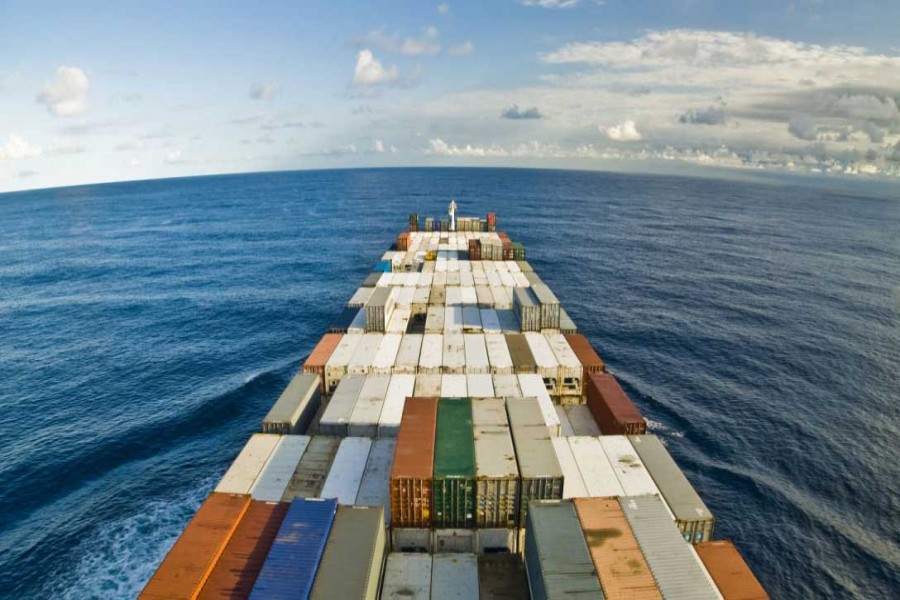Setting export target for a country like Bangladesh is more than a mere exercise in jugglery of figures. Apart from its being a macroeconomic indicator of stability and sustainability, it is also a hallmark of a country's progress or otherwise. Bangladesh has carved a modest niche as a trade partner of various countries -- surely more to come in the shape of a diversified export basket. Let alone famed for the potential for making its mark as top ranking garment and manpower exporters, the unquenchable drive to break new grounds in export earnings is abundant among the youths. The higher the skill ladders we climb, the greater would be the openings before us to match the world class.
Undaunted by the newer challenges -- pandemic, war disruptions and tremors in rule-based trade -- with tectonic shifts in world economy in the offing the government has set the export target at 10.1 per cent higher over the achieved income in the past fiscal. It amounts to US$ 67 billion in the current financial year. Particularly challenging would be the task of steering the export growth to match demands of the graduation issue on the development ladder. Of foremost imperative here would be the skilful use of negotiating capacity and emphasising the value of greater integration of Bangladesh's upcoming economy with the global one. Just as strong market of demands exists in Bangladesh, so also it has potential outreach in terms of exportable merchandise.
One thing of particular note is the huge infrastructure matrix regionally and globally that Bangladesh will soon have at its advantage. Setting targets is one thing but delivering on them is another. Implementation would require all players and agencies to energetically fulfil the obligations they are tasked with -- supervision and monitoring would be the key. Periodic stock taking and reviews must be carried out and made a matter of public consultation. On top of these, fiscal and monetary policies need to be aligned with the export targets which may be treated as a policy matter. On a different plane it is worthwhile to note that intrinsic value of import has increased in Bangladesh because the local entrepreneurs imported capital machinery after two years of pandemic. Now with the machinery poised to go into production, higher export and foreign exchange earnings are expected to ensue. Alongside wasteful and non-productive expenditure will have to be scrupulously avoided.
Finally let's beware of the possible recession in EU and North America which may put our export growth at risk. Already there are signs that export orders might fall in the days to come should the situation in developed economies deteriorate. This makes the issue of competitiveness on the global market place even more compelling. Prevailing power outages, increased transportation costs now pushing up overall cost of production might well affect the country's competitiveness on the global market. This reality should be faced with aplomb.


